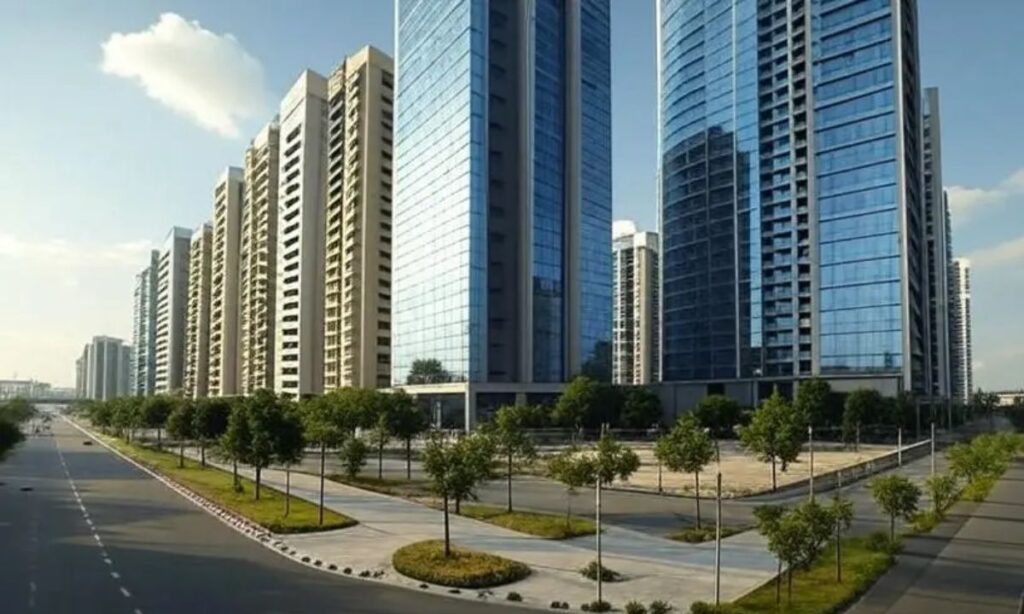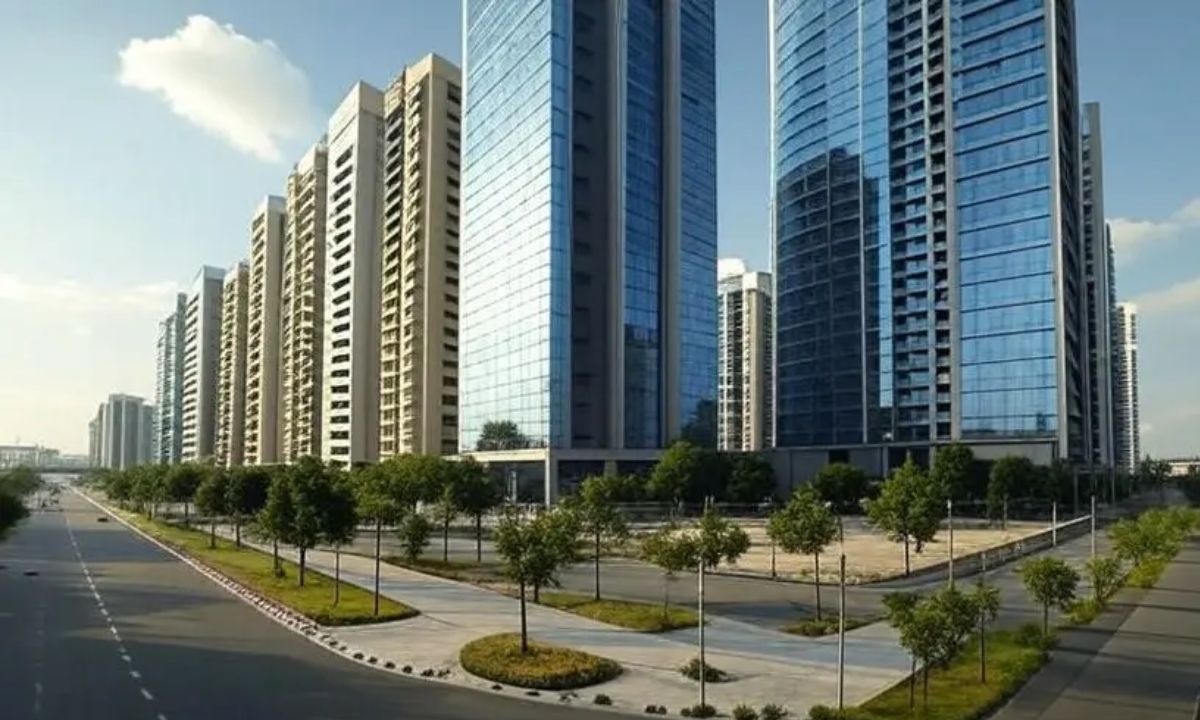In a major step towards urban renewal, the Noida Authority has unveiled a redevelopment policy that draws inspiration from Mumbai’s successful model but introduces local customization to meet the specific needs of the city. With a strong focus on rejuvenating old high-rise housing towers, especially for Economically Weaker Sections (EWS) and leasehold group housing societies, the new policy aims to modernize infrastructure, provide better housing, and enhance the livability of aging residential pockets.

Key Highlights of Noida’s Redevelopment Policy
1. Inspired by Mumbai, Customized for Noida
Noida’s new redevelopment framework mirrors Mumbai’s approach of incentivizing developers through increased Floor Area Ratio (FAR) and saleable units. However, it stands out in its phased, project-specific focus rather than city-wide implementation. This targeted strategy prioritizes:
- Redevelopment of EWS flats
- Leasehold group housing societies
- Older towers in sectors like 27, 93, and 93A
2. Enhanced Developer Incentives
Developers will be allowed to:
- Use up to 3.5 FAR (earlier 2 FAR) for vertical construction
- Sell additional units created through increased FAR
- Purchase additional FAR for redevelopment purposes
3. Benefits for Existing Residents
The policy mandates that:
- Existing residents will receive larger, upgraded homes
- Developers must provide temporary housing during construction
- Redevelopment will include modern amenities and safety standards
4. Legal and Technical Clarity
According to industry experts:
- The policy addresses title regularization and stakeholder consent
- It includes upgraded safety codes, sustainable designs, and smart infrastructure
Quick Summary Table: Noida’s Redevelopment Policy
| Feature | Details |
|---|---|
| Model Inspiration | Mumbai’s redevelopment model |
| Key Focus Areas | EWS units, leasehold group housing |
| FAR Allowed | Up to 3.5 (vs. previous 2 FAR) |
| Temporary Housing | Mandatory for existing residents |
| Project Location | Sectors 27, 93, 93A (initially) |
| Approval Status | Approved in 218th Noida Authority board meeting |
| Implementation | Project-specific RFPs |
Expert Quotes
Lokesh M, CEO, Noida Authority:
“The board has given in-principle approval to the redevelopment of old, dilapidated high-rises so that users of these projects can avail themselves of better basic facilities and modern infrastructure within their buildings.”
Santhosh Kumar, Vice Chairman, Anarock Group:
“Noida’s new redevelopment policy is a progressive step. It closely mirrors Mumbai’s model but is more customized to local needs, with a phased and targeted implementation.”
Abhishek Singh, Director, V3 Infrasol:
“From a legal standpoint, the policy offers a clear framework for title regularization, transfer of rights, and stakeholder consent—key elements that previously caused delays.”
FAQs on Noida’s Redevelopment Policy
Q1. What is the main goal of Noida’s new redevelopment policy?
A: The policy aims to revamp aging high-rise towers, especially those occupied by EWS and leasehold group housing societies, by providing modern infrastructure, better living spaces, and improved amenities.
Q2. How does this policy differ from Mumbai’s redevelopment model?
A: Unlike Mumbai’s city-wide approach, Noida’s model is more localized and phased, focusing on specific projects through RFPs with emphasis on EWS and leasehold societies.
Q3. What benefits do existing residents receive under this policy?
A: Residents are entitled to upgraded, larger homes and must be provided temporary accommodation during redevelopment.
Q4. What are the incentives for developers under the new policy?
A: Developers are allowed higher FAR (up to 3.5), the ability to sell extra units, and the option to buy additional FAR, making projects more financially viable.
Q5. Where will the redevelopment projects start?
A: Initial redevelopment is planned in sectors 27, 93, and 93A of Noida.
